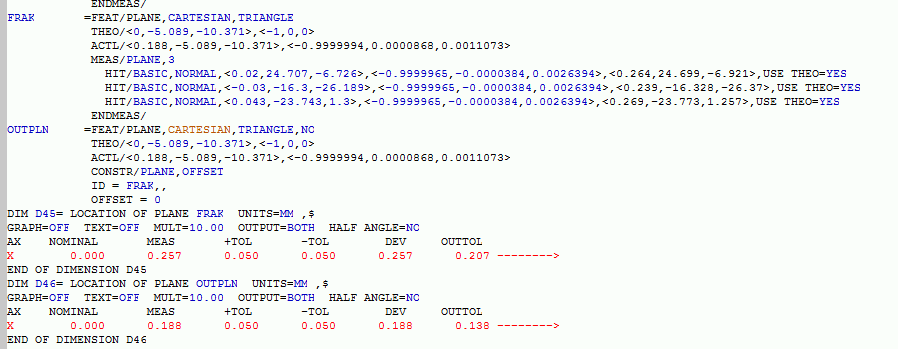
Your Products have been synced, click here to refresh
Your Products have been synced, click here to refresh

In theory, you could use an offset of 0, or a generic plane to "flatten" any flatness variation for the measured plane... but FRAK is only 3 hits (a 3pt plane will not capture any flatness, ever), so it makes absolutely zero sense.
So I too am confused as to the following:
1 Why the two dims would produce different X axis values and
2 Why someone would do this intentionally in the routine
| © 2024 Hexagon AB and/or its subsidiaries. | Privacy Policy | Cloud Services Agreement |